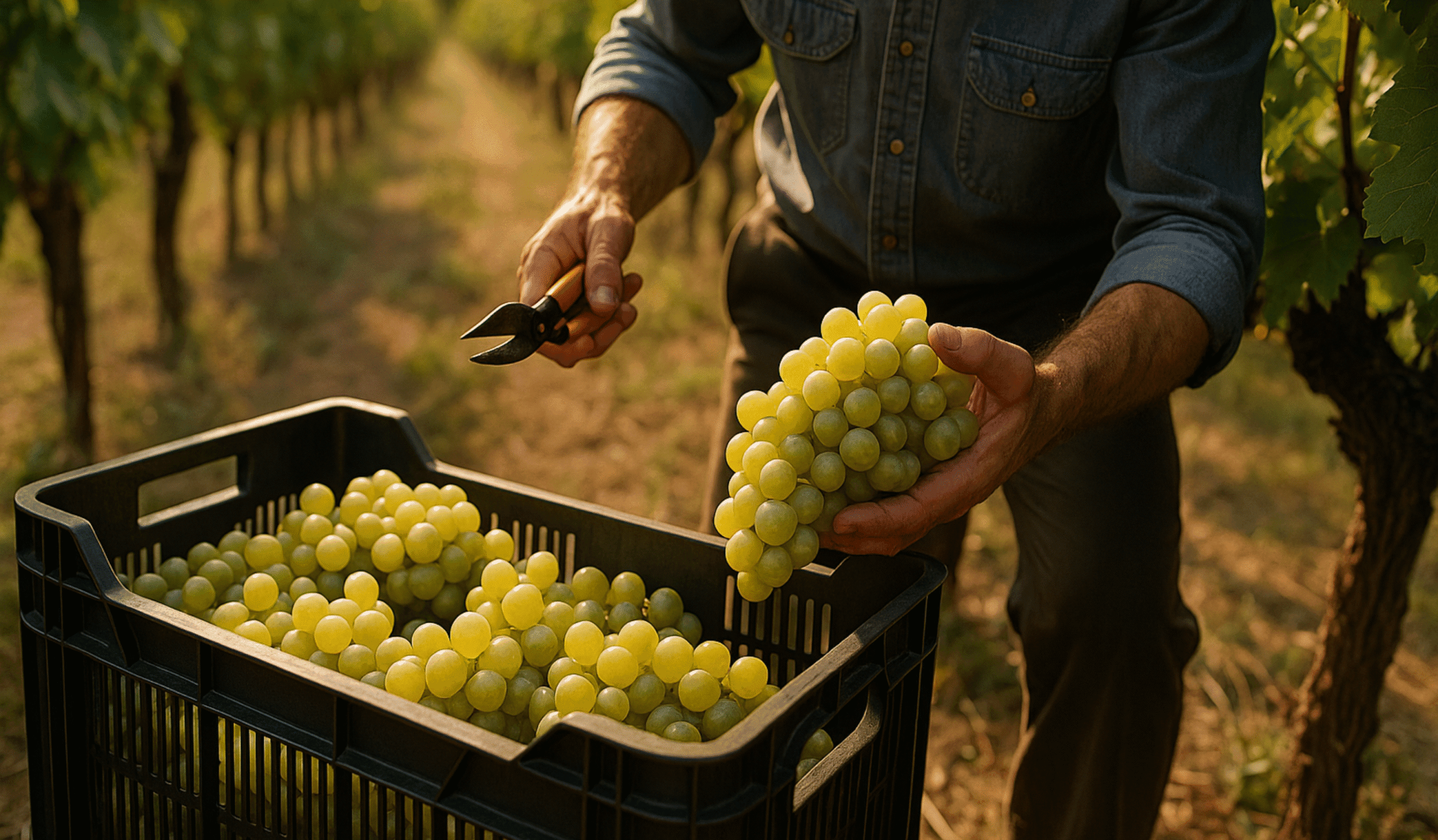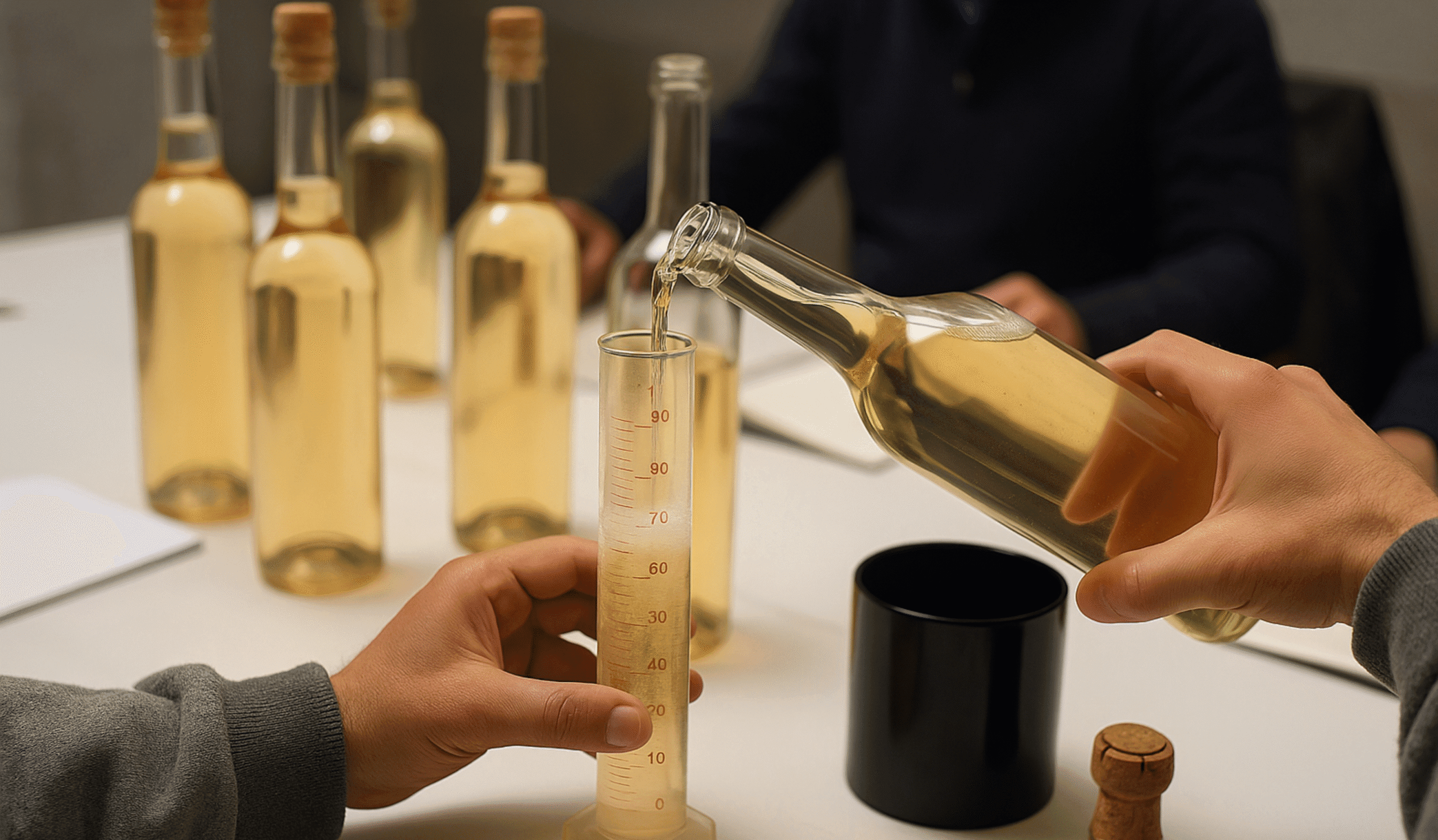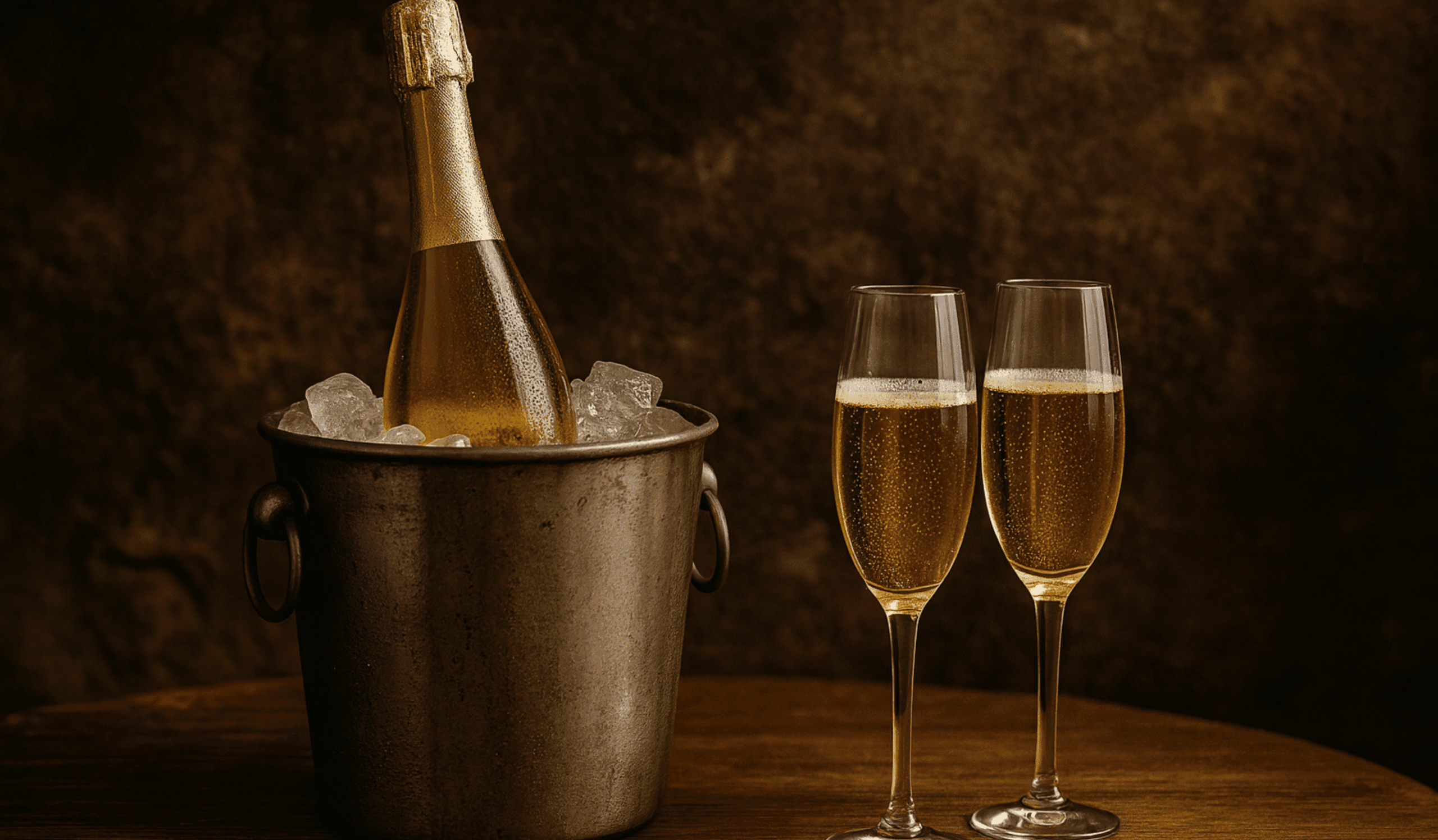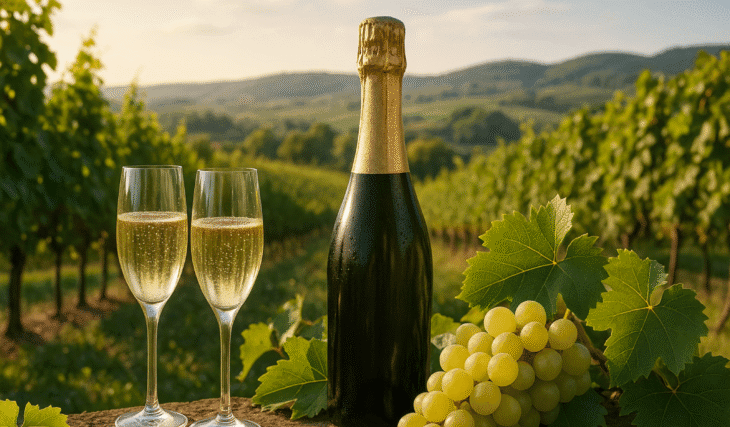How Champagne Is Made: From Vineyard to Bottle
Champagne is an expression of history, geography, and craftsmanship. Each bottle begins in the northern vineyards of France, where chalk-rich soils and a cool climate create the acidity and freshness needed for the finest sparkling wines. From there, the grapes are pressed with precision, fermented into still base wines, blended to achieve harmony, and transformed through the méthode champenoise, the traditional method that produces bubbles inside the bottle. Patience in cellars, attention to detail in the vineyard, and the artistry of winemakers shape every stage of the Champagne production process.
Exploring how Champagne is made reveals why it cannot be duplicated outside its region of origin. The vineyard to bottle journey reflects centuries of refinement, strict regulations, and respect for terroir. It involves hand-harvesting traditions, careful fermentation, blending across vintages and varieties, and long aging on lees that give depth and character. For wine lovers, understanding this process enriches each tasting experience. For anyone curious about craftsmanship, it highlights how precision and tradition elevate Champagne into a symbol of celebration and excellence recognized around the world.
Key Takeaways:
- Champagne is crafted through the méthode champenoise, involving hand-harvesting, fermentation, blending, aging, riddling, disgorgement, dosage, and corking.
- The unique terroir of Champagne, with chalky soils and a cool climate, preserves freshness and authenticity that cannot be duplicated elsewhere.
- Blending, or assemblage, allows cellar masters to balance grape varieties and vintages, creating either consistent non-vintage styles or expressive vintage releases.
- Lees aging and riddling enrich Champagne with flavors like brioche and nuts while refining the mousse into delicate, persistent bubbles.
- Corking and final presentation secure the effervescence and identity of Champagne, turning each bottle into a symbol of craftsmanship and celebration.
The Vineyards of Champagne
The Champagne region in northeastern France is unlike any other winegrowing area in the world. Its chalk-rich soils act as natural reservoirs, storing water that nourishes the vines during dry spells while reflecting sunlight to aid ripening. Combined with a cool northern climate, these soils preserve the high acidity that gives Champagne its freshness, longevity, and ability to age gracefully.
Three grape varieties dominate production. Chardonnay adds finesse, floral notes, and citrus brightness. Pinot Noir brings body, structure, and depth. Pinot Meunier contributes fruit-forward aromas and approachability. Each variety plays a distinct role in the final blend, and together they create the harmony that defines Champagne.
Vineyard practices remain deeply traditional. Grapes are harvested entirely by hand to ensure that only the best fruit reaches the press, a rule designed to prevent damage and maintain purity. Strict regulations govern yields, harvest timing, and vineyard care, reinforcing Champagne’s reputation for precision and quality at every stage.
With the grapes ready, the Champagne production process moves through a series of carefully defined steps that transform fruit from the vineyard into the finished bottle.
Step 1. Harvesting and Pressing

Harvest in Champagne is a highly regulated and carefully timed event, usually taking place in September when grapes have reached the right balance of ripeness and acidity. Unlike many wine regions where machines are common, Champagne regulations require hand-harvesting. This protects the delicate grapes from bruising and ensures that only the best fruit makes it into production.
Once collected, the grapes are taken to the press without delay. They are pressed gently to extract the juice, known as must, while minimizing contact with skins, seeds, and stems, which could add bitterness or unwanted tannins. The first pressing, called the cuvée, produces the purest and most refined juice, destined for the highest-quality Champagnes. Later pressings, known as the tailles, can be used in other blends depending on the winemaker’s style. Precision at this stage sets the foundation for finesse and clarity in the final wine.
Step 2. Primary Fermentation
Once the juice has been collected, it moves into fermentation tanks, usually stainless steel though some houses still use oak barrels to add complexity. During alcoholic fermentation, natural or selected yeasts convert the grape sugars into alcohol, producing a still wine known as vin clair.
At this point, the wines are high in acidity, sharp, and not yet enjoyable to drink, but they hold the essential freshness that will carry through into the final Champagne. Each vineyard plot and grape variety is fermented separately, giving the cellar master a wide palette of flavors and structures to work with later. Careful temperature control and monitoring ensure clean, precise wines that reflect the character of the harvest.
Step 3. Blending (Assemblage)

With the base wines complete, the process enters one of the most defining stages of Champagne production: blending, or assemblage. The cellar master, known as the chef de cave, carefully tastes dozens of still wines made from different grape varieties, vineyard sites, and sometimes multiple harvest years. Each lot brings unique qualities, from Chardonnay’s brightness to Pinot Noir’s structure and Pinot Meunier’s fruitiness.
The goal of blending is to achieve balance, harmony, and a style that reflects the house identity. For non-vintage Champagne, reserve wines from previous years are often added to maintain consistency, ensuring that each release tastes recognizably similar despite differences in harvest conditions. For vintage Champagne, only wines from a single exceptional year are used, highlighting the unique character of that harvest. This stage requires both technical skill and artistic intuition, as blending sets the tone for the Champagne’s eventual personality.
Step 4. Secondary Fermentation (Prise de mousse)
Once the final blend, or cuvée, has been created, it is bottled in strong glass designed to withstand internal pressure. Before sealing, winemakers add the liqueur de tirage, a mixture of still wine, sugar, and yeast. This addition initiates a second fermentation, known as the prise de mousse, which takes place entirely inside the bottle.
During this stage, the yeast consumes the added sugar, releasing carbon dioxide. Because the bottle is sealed with a crown cap, the gas remains trapped in the wine, creating Champagne’s signature effervescence. The transformation is slow and delicate, lasting several weeks, and marks the moment when the wine begins its evolution from still base wine into sparkling Champagne.
Step 5. Riddling (Remuage) and Lees Aging
After secondary fermentation, bottles are stored horizontally in cool, dark cellars, where they rest undisturbed for months or even years. During this time, the wine ages on its lees, the spent yeast cells left behind after fermentation. This process enriches Champagne with distinctive aromas of brioche, toast, nuts, and cream, while also softening its texture and refining the mousse. Regulations require a minimum of 15 months of aging for non-vintage Champagne and at least three years for vintage releases, though many houses age their wines far longer to enhance complexity.
Once aging is complete, bottles must be clarified through riddling, or remuage. This involves gradually rotating and tilting each bottle so the sediment collects in the neck. Traditionally, this was done entirely by hand, with skilled riddlers turning thousands of bottles each day on wooden pupitres. Today, most producers use mechanical gyropalettes, which replicate the process efficiently while maintaining precision.
Step 6. Disgorgement
When riddling is complete and the sediment has collected in the neck of the bottle, the Champagne is ready for disgorgement. This critical step removes the yeast deposit without losing the wine’s sparkle. To achieve this, the bottle neck is submerged in a freezing solution, creating a solid plug of frozen sediment. When the crown cap is removed, the pressure inside the bottle forces the plug out, leaving the wine clear and bright.
Disgorgement not only clarifies the Champagne but also signals that the aging on lees has ended. From this moment forward, the wine’s evolution shifts toward preserving freshness and revealing the nuanced flavors developed during its time in the cellar.
Step 7. Dosage
Once the sediment has been expelled, a small amount of liquid is added back to the bottle to replace what was lost during disgorgement. This mixture, called the dosage or liqueur d’expédition, consists of still wine blended with a precise amount of sugar. The quantity of sugar determines the Champagne’s final style, shaping its sweetness and balance.
Styles range from Brut Nature with little or no added sugar, to Brut, the most popular and versatile style, through to Demi-Sec, which carries noticeable sweetness and pairs beautifully with desserts. The cellar master carefully adjusts the dosage to ensure harmony between acidity, body, and flavor, preserving both freshness and elegance.
Step 8. Corking and Final Presentation
After dosage, the Champagne is ready for its final sealing. Each bottle is closed with the iconic mushroom-shaped cork, which is compressed into the neck and secured with a wire cage called a muselet. This ensures the wine remains safely contained under pressure, preserving the effervescence created during secondary fermentation.
The bottles are then dressed with foil and labels, carrying the producer’s identity, the style of Champagne, and often details such as whether it is vintage or non-vintage. At this point, some houses release the bottles immediately, while others allow them to rest for additional months to integrate flavors and achieve greater harmony.
For consumers, storage plays an important role in preserving quality. Champagne should be kept in a cool, dark place, ideally on its side to keep the cork moist and airtight. With proper care, many Champagnes can age gracefully, developing deeper aromas and textures while maintaining their lively sparkle.
Sensory Experience and Craftsmanship

Every detail in the Champagne production process is designed to shape the experience in the glass. The secondary fermentation is responsible for the fine bubbles that rise in streams, known as the bead. Lees aging gives richness to the mousse and layers of flavor that recall brioche, almond, or pastry. Blending decisions influence balance, with Chardonnay contributing freshness and elegance, Pinot Noir adding structure and depth, and Pinot Meunier bringing fruit and approachability.
The tasting experience reflects the union of terroir and technique. Aromas of citrus, green apple, toast, or minerality can be traced back to the vineyard and the skill of the cellar master. Each sip carries the history of the region and the discipline of generations who perfected the méthode champenoise. More than a drink, Champagne is an expression of craftsmanship, created through patience, precision, and respect for tradition.
FAQs
Why is hand-harvesting required in Champagne?
Hand-harvesting is one of the strictest requirements in Champagne production and is enforced by law. Machines are not permitted because they can crush grapes and break skins, which exposes the juice to oxidation and tannins from seeds or stems. By harvesting each bunch carefully, producers protect the delicate balance of freshness and purity that defines Champagne. This practice also ensures that only healthy, ripe grapes are selected for pressing. While it is more labor-intensive, hand-picking preserves the quality of the must and sets the foundation for the finesse expected in the final bottle.
What happens to the yeast after secondary fermentation?
During secondary fermentation, yeast consumes the added sugar and releases carbon dioxide, which becomes trapped in the bottle and creates Champagne’s bubbles. Once the sugar is depleted, the yeast cells die and settle as a layer of sediment called lees. Instead of being discarded immediately, these lees are left in contact with the wine for months or years. Their gradual breakdown, known as autolysis, enriches the wine with creamy texture and complex flavors such as brioche, pastry, and roasted nuts. The lees remain in the bottle until the riddling and disgorgement stages, when they are collected and expelled, leaving the wine clear and refined.
Why is riddling important in Champagne production?
Riddling, or remuage, is the step that makes disgorgement possible. After months or years of lees aging, millions of yeast particles remain suspended in the bottle. Riddling involves gently rotating and tilting each bottle in small increments until the sediment slides down into the neck. If this step were skipped, Champagne would remain cloudy and unappealing, and the disgorgement process could not cleanly remove the deposit. Traditional riddling was done entirely by hand, with riddlers turning thousands of bottles daily, but today gyropalettes often carry out the task. Even so, the principle is the same: riddling prepares the wine for clarity while preserving every drop of flavor and effervescence.
How long can Champagne stay in the cellar before release?
By law, non-vintage Champagne must remain in the cellars for at least 15 months, and vintage Champagne for at least 36 months. However, many houses age their wines far longer than these minimums. Some non-vintage bottles rest for three to four years, while prestige cuvées may spend a decade or more underground. The cool, humid chalk cellars of Champagne provide the perfect conditions for slow maturation. Extended aging allows the lees to impart more complex aromas and gives the bubbles a finer texture. Producers decide when to release based on style and philosophy, but the willingness to wait demonstrates Champagne’s reputation for patience and craftsmanship.
What role does the cork play in the final stage of Champagne making?
The cork is far more than a simple closure. Once inserted and secured with a wire cage, it must hold back pressure equivalent to about six atmospheres, preserving the sparkle inside the bottle. Over time, the cork also plays a subtle role in aging. It allows a minimal exchange of oxygen, which helps the wine evolve gradually and gain complexity. This delicate balance is essential: too much oxygen would spoil the freshness, while none at all would stall development. The mushroom-shaped cork is a signature of Champagne, symbolizing not only its identity but also the craftsmanship that carries the wine from vineyard to bottle.
